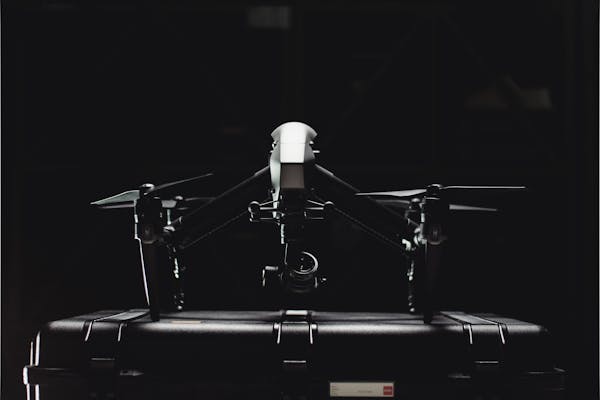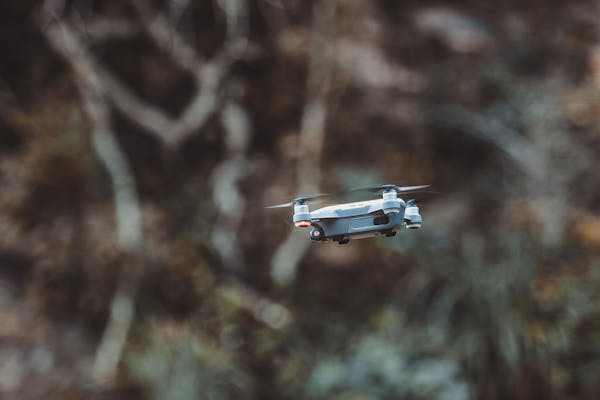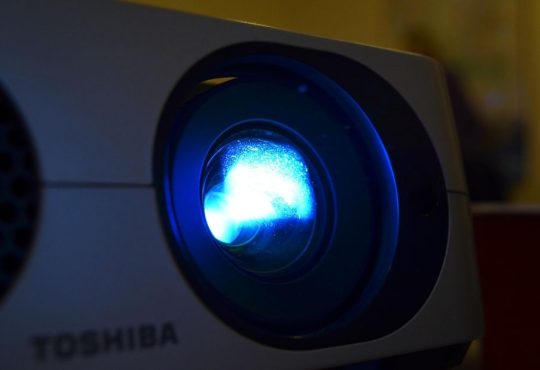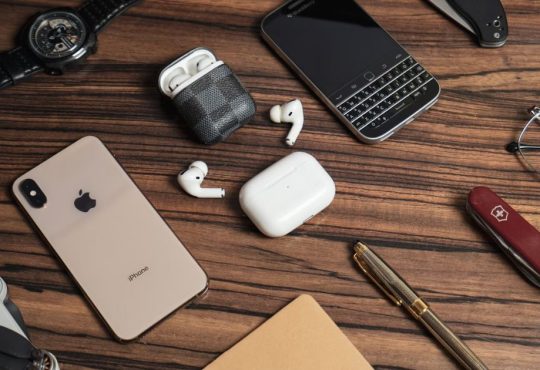The world has witnessed tremendous advancements in technology over the past few decades, reshaping almost every aspect of our daily lives. One of the most influential innovations in recent years is the development and widespread use of drones. Once reserved for military operations and a niche hobbyist community, drones have evolved to play significant roles in industries such as agriculture, healthcare, transportation, entertainment, and more. Their potential applications are vast, and the impact of drones is profound, both in terms of technological advancement and societal change.

What Are Drones?
Drones, also known as Unmanned Aerial Vehicles (UAVs), are aircraft that operate without a human pilot onboard. Instead, they are controlled remotely or autonomously by software, sensors, and onboard computers. Drones come in many shapes and sizes, from small quadcopters used for personal recreation to large, high-tech UAVs employed in military and commercial settings.
The most basic drones typically consist of a lightweight frame, propellers, a flight controller, and a battery. However, more advanced models may include cameras, GPS, LiDAR sensors, thermal imaging, and AI-based navigation systems. Their versatility has made drones indispensable in a variety of applications, allowing industries to streamline operations, reduce costs, and even save lives.
Drones in Military Applications: The Beginning

The modern use of drones can be traced back to military operations. Early iterations of UAVs were developed for reconnaissance missions, allowing military forces to gather intelligence without risking human lives. As technology improved, drones began to be equipped with weaponry and were used in combat operations, making them an essential part of modern warfare.
The impact of drones on military strategy cannot be overstated. Drones have enabled military forces to conduct precise strikes on targets with minimal collateral damage. They have also provided real-time surveillance in high-risk areas, improving situational awareness and reducing the need for ground troops in dangerous environments.
However, the use of military drones has also raised ethical questions regarding warfare. The ability to carry out remote strikes from thousands of miles away has led to debates about accountability, the loss of human judgment in warfare, and the potential for unintended civilian casualties.
Drones in Commercial and Industrial Applications
As drone technology advanced and costs decreased, the commercial potential of drones became apparent. Today, drones are revolutionizing several key industries, with their impact becoming more pronounced each year.
-
Agriculture: A Growing Industry
The agricultural sector has seen one of the most significant impacts of drones. Traditional farming techniques have long relied on manual labor and inefficient processes, but drones are helping farmers optimize their operations through precision agriculture.
Drones equipped with sensors, cameras, and GPS can monitor crops, assess plant health, map fields, and even apply pesticides or fertilizers with pinpoint accuracy. This technology enables farmers to make data-driven decisions, increasing crop yields, reducing water usage, and minimizing the environmental footprint of their operations. By providing real-time data, drones allow farmers to detect issues like nutrient deficiencies, pests, or diseases before they cause significant damage.
The impact of drones on agriculture has been so substantial that some predict it will be a multi-billion-dollar industry in the coming years. As demand for food continues to grow, the ability to maximize crop production while conserving resources will be essential, and drones are set to play a vital role in this transformation.
-
Delivery and Logistics: Faster, Cheaper, and More Efficient
One of the most widely anticipated uses of drones is in the delivery and logistics sector. Companies like Amazon, UPS, and DHL have invested heavily in drone delivery systems, with the aim of providing faster and more cost-effective solutions for delivering goods to consumers.
Drone delivery has the potential to revolutionize last-mile logistics, the final step in the supply chain that often accounts for a significant portion of delivery costs. Drones can bypass traffic, deliver packages directly to homes, and reduce the need for traditional delivery vehicles, which contribute to carbon emissions and road congestion.
The impact of drones in logistics extends beyond e-commerce. In remote or disaster-stricken areas, drones can be used to deliver medical supplies, food, and other essentials, saving lives and providing critical support when traditional transportation methods are unavailable.
-
Construction and Infrastructure: Aerial Insights
The construction industry is also reaping the benefits of drone technology. Drones are being used to survey land, inspect structures, and monitor construction progress in real-time. With the ability to capture high-resolution images and 3D maps, drones offer construction companies a more efficient and cost-effective way to plan and manage projects.
For infrastructure maintenance, drones can inspect bridges, power lines, and pipelines, providing detailed assessments without the need for workers to climb dangerous structures or shut down operations. This not only improves safety but also allows for quicker and more accurate identification of potential issues, reducing downtime and maintenance costs.
The impact of drones in construction and infrastructure management is clear: faster data collection, improved safety, and reduced costs.
-
Entertainment: Creativity from New Heights
Drones have also made a significant impact in the entertainment industry. Filmmakers and photographers use drones to capture stunning aerial shots that were once only possible with expensive helicopters or cranes. The ability to film dynamic, high-angle views has opened up new possibilities for creative expression, and drone footage has become a staple in movies, TV shows, and commercials.
Beyond filmmaking, drones have been used in live events such as concerts, festivals, and sporting events. Drone light shows, where hundreds or even thousands of drones are synchronized to create intricate patterns in the sky, have become popular attractions, showcasing the artistic potential of drone technology.
The impact of drones on the entertainment industry continues to grow, as more creators adopt the technology to push the boundaries of visual storytelling and live performance.
Drones in Public Safety and Healthcare: Saving Lives from Above
While drones are often associated with commercial and recreational use, they are increasingly being deployed in public safety and healthcare settings, where their impact can be measured in lives saved.
-
Search and Rescue Operations
One of the most critical applications of drones in public safety is in search and rescue missions. Equipped with thermal imaging cameras, drones can quickly locate missing persons in remote or hard-to-reach areas, such as dense forests, mountains, or disaster zones. This capability allows rescue teams to cover large areas in a fraction of the time it would take on foot or by vehicle, increasing the chances of a successful rescue.
Drones are also invaluable in disaster response scenarios, where they can assess damage, identify survivors, and deliver supplies to isolated areas. The ability to fly in challenging conditions, such as after earthquakes or floods, makes drones a powerful tool for emergency responders.
-
Medical Supply Delivery
In healthcare, the impact of drones is being felt in regions where access to medical supplies and services is limited. Drones can deliver life-saving medicines, vaccines, and blood to remote or war-torn areas, bypassing roads that may be impassable due to natural disasters or conflict.
Several organizations have successfully implemented drone delivery systems to transport medical supplies. For example, in Rwanda and Ghana, drones operated by the company Zipline are delivering blood and vaccines to rural hospitals, significantly reducing delivery times and improving patient outcomes.
As the technology continues to evolve, we can expect drones to play an even greater role in improving healthcare access, particularly in underserved regions.
Environmental Monitoring and Conservation

The impact of drones extends to environmental conservation efforts, where they are being used to monitor wildlife, track deforestation, and gather data on ecosystems. Drones equipped with high-resolution cameras, thermal sensors, and LiDAR can provide detailed images and data that help researchers understand environmental changes and develop conservation strategies.
-
Wildlife Monitoring and Protection
Drones have become an invaluable tool for wildlife conservationists. They can be used to monitor endangered species, track animal migrations, and even deter poachers. In some regions, drones equipped with thermal cameras are being used to patrol protected areas at night, identifying poachers before they can harm animals.
Drones are also being used to study animal behavior without disturbing their natural habitats. This non-intrusive method of data collection provides researchers with a wealth of information that can be used to protect vulnerable species and preserve biodiversity.
-
Tracking Deforestation and Climate Change
Drones are also helping to combat deforestation and monitor the effects of climate change. By capturing high-resolution images of forests, drones allow researchers to track changes in forest cover, identify illegal logging activities, and assess the health of ecosystems.
In addition to monitoring forests, drones can be used to gather data on glaciers, coastlines, and other areas affected by climate change. This data is crucial for understanding the impact of climate change on the environment and developing strategies to mitigate its effects.
The Economic Impact of Drones
While the impact of drones on industries is largely positive, the economic implications are complex. On one hand, drones are creating new job opportunities in fields such as drone operation, maintenance, software development, and data analysis. The demand for skilled drone pilots is expected to grow as more industries adopt the technology.
On the other hand, drones are also disrupting traditional industries and displacing workers. For example, the use of drones in agriculture may reduce the need for manual labor, while drone delivery systems could lead to job losses in the logistics and transportation sectors.
The key challenge for policymakers will be to balance the benefits of drone technology with the potential negative effects on employment. Ensuring that workers have access to training and education in new technologies will be essential for minimizing job displacement and maximizing the economic benefits of drones.
Challenges and Concerns: Privacy, Security, and Regulation
Despite the many benefits of drones, their widespread use has also raised concerns about privacy, security, and regulation. As drones become more prevalent in our skies, questions about how they should be regulated and what protections should be in place for individuals and businesses are becoming increasingly important.
-
Privacy Concerns
One of the most pressing concerns related to drones is privacy. Drones equipped with cameras and other sensors can capture images and data without the knowledge or consent of individuals. This has led to concerns about surveillance and the potential for drones to infringe on personal privacy.
As drones become more common in urban areas, governments will need to establish clear regulations to protect citizens’ privacy while allowing for the continued growth of the drone industry.
-
Security Risks
The use of drones in sensitive areas, such as airports, military bases, and critical infrastructure, has raised concerns about security. Unauthorized drones flying in restricted airspace can pose a significant risk to public safety, and there have been instances of drones being used for illegal activities, such as smuggling drugs or weapons.
To address these risks, governments and companies are developing drone detection and mitigation systems, as well as stricter regulations for drone operations in sensitive areas.
-
Regulatory Challenges
Regulating the use of drones is a complex task, as it requires balancing the need for innovation with the need for safety and privacy. In many countries, aviation authorities have established rules for drone operations, including restrictions on where and when drones can fly.
However, as drone technology continues to evolve, regulators will need to adapt to new challenges. For example, autonomous drones that can operate without human oversight will require new rules and guidelines to ensure they can safely coexist with manned aircraft.
The Future of Drones: What’s Next?
The impact of drones is already being felt across a wide range of industries, but the potential for further innovation is enormous. In the coming years, we can expect to see drones become even more autonomous, with advancements in AI and machine learning enabling drones to make real-time decisions without human intervention.
As battery technology improves, drones will be able to fly longer distances and carry heavier payloads, opening up new possibilities for drone delivery, transportation, and industrial applications.
The impact of drones on industries, society, and the economy is profound and far-reaching. From revolutionizing agriculture and healthcare to transforming logistics and public safety, drones have the potential to reshape the way we live and work.





